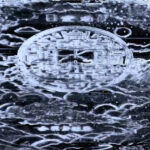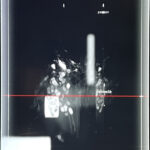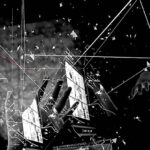“ReCollection” by Weidi Zhang, Rodger Luo
Title:
Artist(s) and People Involved:
Exhibiting Artist(s):
-
Weidi Zhang
-
- University of California at Santa Barbara
- Rodger Luo
Symposium:
Artist Statement:
Hacnum Exhibition, Various locations, May 16 – 21
ReCollection is an interactive AI art installation that assembles synthetic collective visual memories based on language input, blurring the boundaries between remembrance and imagination through AI system design and interactive experimental visualization.
According to Dr. Mary Steedly, memories are a “densely layered, sometimes conflictual negotiation with the passage of time.” As a result of Alzheimer’s disease and related dementias, at least 50 million people suffer memory regression and cognitive difficulties. Meanwhile, text-to-image artificial intelligence (AI) systems have gained a great deal of attention in 2022 as exciting forms of AI that generate visuals based on language input, which creates new possibilities for reassembling fragmented memories.
-When we coexist with machines, will we accumulate synthetic recollections of symbiotic imagination?
-Is language capable of triggering and synthesizing memories?
-How does our collective memory inspire new visual forms and alternative narratives?
Recollection is an assemblage of human-machine artifacts that emphasizes the contributions from three sides: artists, machines, and participants. This customized AI application facilitates multiple AI techniques, like speech recognition, text auto-completion, and text-to-image, to convert language input into image sequences of new memories. As an interactive experience, participants will describe their memories with fragmented sentences, and our system will automatically fill in details, creating new visual memories.
We developed our customized AI system by fine-tuning a pre-trained transformer-based AI model to learn the documentaries of Alzheimer patients’ visual memories and their descriptions. The system imagines new memories by interpreting real-time narratives from participants in the installation. We did not employ the generative visual output from our AI system as our final delivery in the installation. Instead, we draw inspiration from Monotype, a printmaking technique with a history that dates back to the 1640s, which produces unique visualizations on paper through printing and reprinting. Therefore, we program our system to automatically transform the machine-generated visuals algorithmically into an evolving real-time visualization with a unique aesthetic through image processing and experimental data visualization. We collaborate with our AI system to design this art experience and intentionally bridge fine art-making techniques with generative AI art to emphasize the symbiotic relationships between past and future, as well as machinic vision and human perception towards a new aesthetic and visual language.
By providing a conceptual framework for non-linear narratives, which constitute symbiotic imaginations, and future scenarios of memories, culture production, and reproductions. It may inspire the cure for memory regression by providing a future scenario, a thought experiment, and an intimate recollection of symbiosis between beings and apparatus. It raises people’s awareness of future memory preservation and their empathy for the dementia community through a personalized aesthetic experience. It offers an artistic approach and future prototype for cultural heritage reproduction and re-imagination and explores the tensions that exist in the co-relations between visual representations, language, and narratives.
Website:
Additional Images:
- 2023 Zhang Luo ReCollection










